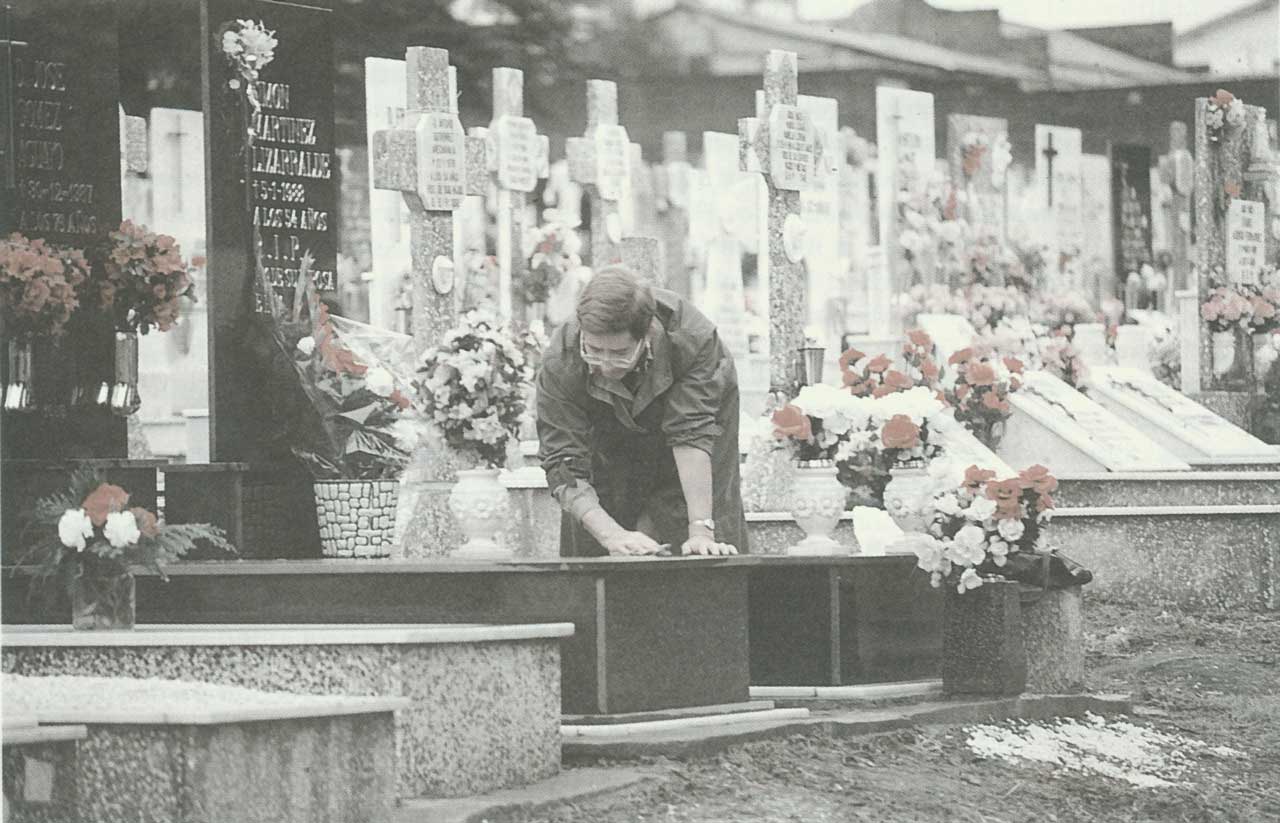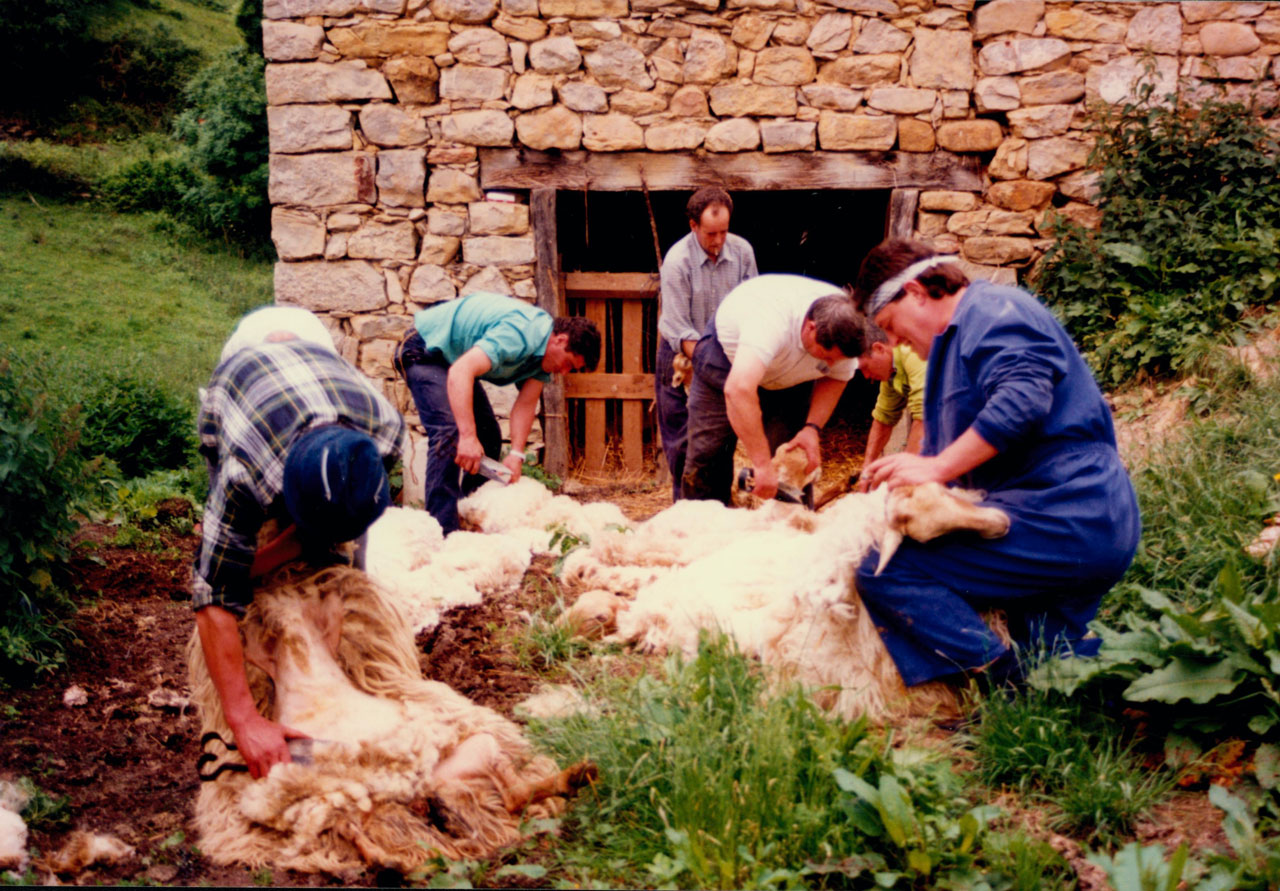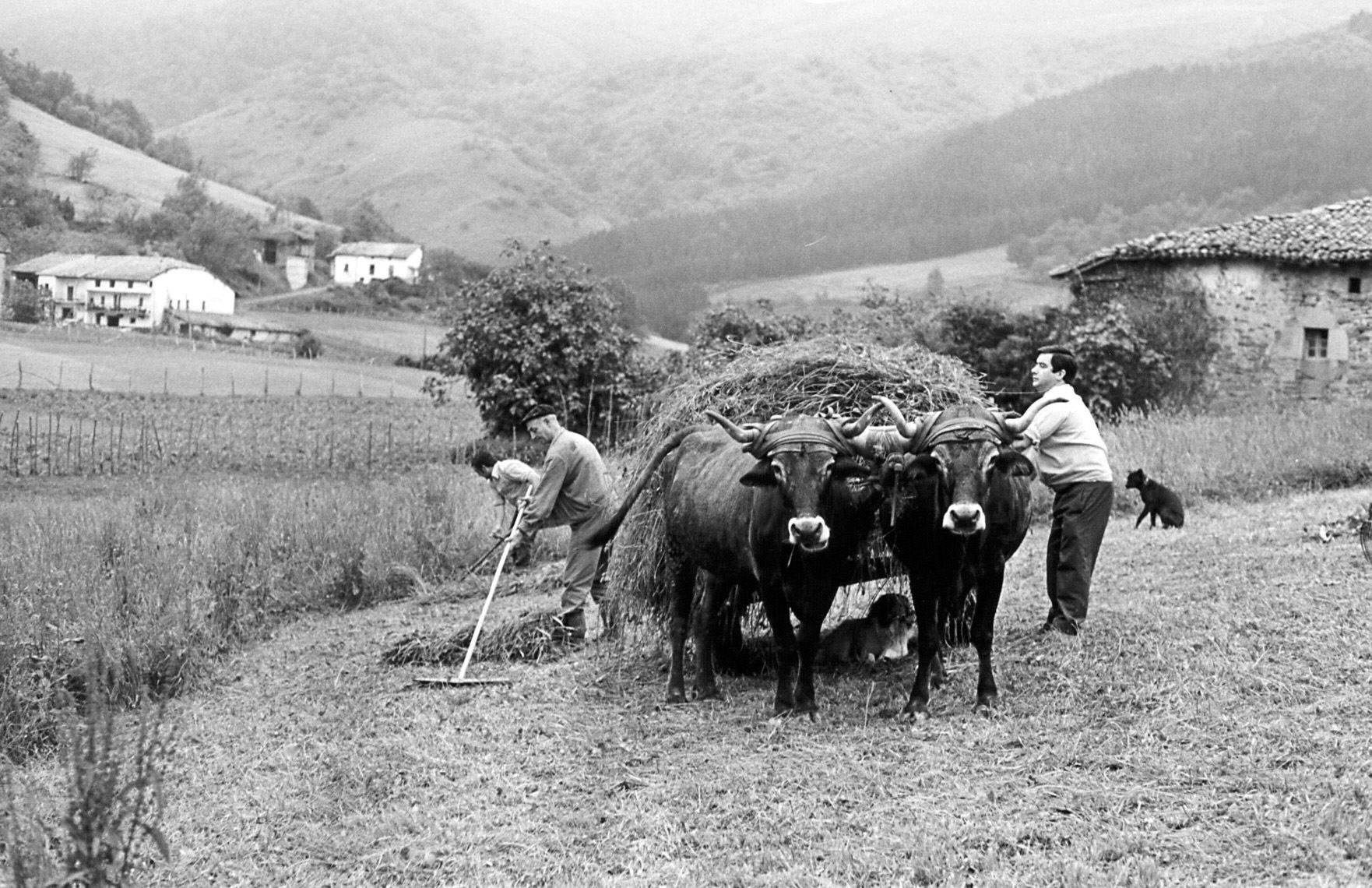Diferencia entre revisiones de «Main Page/en»
De Atlas Etnográfico de Vasconia
| Línea 212: | Línea 212: | ||
| − | ===[ganaderia|Ganaderia y pastoreo en Vasconia|/atlas/ganaderia.png| | + | ===[ganaderia|Ganaderia y pastoreo en Vasconia|/atlas/ganaderia.png|Animal husbandry as a way of life rather than an economic opportunity: aspects related to domestic animals and the human-animal bond.]=== |
====[Ganaderia_y_pastoreo_en_vasconia | Ganaderia y pastoreo en Vasconia]==== | ====[Ganaderia_y_pastoreo_en_vasconia | Ganaderia y pastoreo en Vasconia]==== | ||
| − | ====[/atlas/ganaderia/Subida-a-los-pastos-del-Gorbeia-2006.jpg| | + | ====[/atlas/ganaderia/Subida-a-los-pastos-del-Gorbeia-2006.jpg|On the move to the summer pastures in Gorbeia, 2006. Source: Antxon Aguirre, Etniker Euskalerria Groups.|Traditional shepherding and free-range livestock husbandry have prevailed on regions where these three requisites are satisfied: communal land, open-access rights, and free movibility for herds.|]==== |
| − | ====[/atlas/ganaderia/Ovejas-latxas-de-cara-negra-Abadino.jpg| | + | ====[/atlas/ganaderia/Ovejas-latxas-de-cara-negra-Abadino.jpg|Dark-faced ''latxa'' sheep. Abadiño (B). Source: Rosa M.ª Ardanza, Etniker Euskalerria Groups.|The permanence of shepherding in the mountains of the Basque Country over centuries may help understand the fact that denominations given to diverse species of livestock, as well as to the implements used, form a distinguishing lexical corpus, independent from Indoeuropean languages.|]==== |
| − | ====[/atlas/ganaderia/Pastando-en-Eneabe-Zeanuri-1996.jpg| | + | ====[/atlas/ganaderia/Pastando-en-Eneabe-Zeanuri-1996.jpg|Grazing in Eneabe. Zeanuri (B), 1996. Source: Labayru Fundazioa Photograhic Archive: José Ignacio García Muñoz.|Two millennia ago Pliny distinguished Vasconum saltus, humid and wooded, from Vasconum ager, with its grain fields and vineyards. That distinction still remains today, with regard to livestock farming.|]==== |
====[/atlas/ganaderia/Pastor-de-Lanciego-subiendo-a-Tolono-1996.jpg|Pastor de Lanciego subiendo a Toloño (A), 1996. Fuente: José Ángel Chasco, Grupos Etniker Euskalerria.|La vertiente mediterránea de Vasconia se ha caracterizado por la importancia de sus comunales, que aún se mantienen en gran medida; su explotación sigue siendo de carácter comunitario mediante uniones y hermandades que comprenden varias localidades.||ENLACE]==== | ====[/atlas/ganaderia/Pastor-de-Lanciego-subiendo-a-Tolono-1996.jpg|Pastor de Lanciego subiendo a Toloño (A), 1996. Fuente: José Ángel Chasco, Grupos Etniker Euskalerria.|La vertiente mediterránea de Vasconia se ha caracterizado por la importancia de sus comunales, que aún se mantienen en gran medida; su explotación sigue siendo de carácter comunitario mediante uniones y hermandades que comprenden varias localidades.||ENLACE]==== | ||
Revisión del 12:43 27 ene 2020
Grandmother and grandchildren. Urduliz (B), 2011. Source: Akaitze Kamiruaga, Etniker Euskalerria Groups.
House and Family in the Basque Country


House and Family in the Basque Country
The traditional Basque family is noted for a type of clearly defined feminism, which can be seen from the application of the right of the first-born to inherit regardless of their sex, the common ownership of property brought to the marriage by the spouses, their equal standing in civil law, and the woman’s status as the head of the household in the domestic religious life, the cultural rites of the home, of the church and of the family burial ground.
Family Diet in the Basque Country


Family Diet in the Basque Country
Food was grown on the family small holding or bought from local markets, which, in turn, were supplied with food grown locally. A few products, nearly always non-staples, complemented local or household self-supply.
Children’s Games in the Basque Country


Children’s Games in the Basque Country
Txirristi-mirristi, gerrena, plat, olio-zopa, kikili-salda, urrup edan edo klik, ikimilikiliklik. Drawing lots chant
Traditional Medicine in the Basque Country


Traditional Medicine in the Basque Country
There is a hidden wisdom behind popular medicine that goes far beyond the remedy itself. This collection of data helps us catch a glimpse of a way to understand health and disease —and ultimately the human body— that differs from the prevailing view.
Rites from Birth to Marriage in the Basque Country


Rites from Birth to Marriage in the Basque Country
Charms, kutunak, were attached to children’s clothes and were said to protect them from the evil eye.
Funeral Rites in the Basque Country


Funeral Rites in the Basque Country
Omens of death included those associated with strange behaviour by some domestic animals, mainly dogs and cockerels.
Esquilando ovejas por el sistema tradicional. Carranza (B), 1998. Fuente: Miguel Sabino Díaz, Grupos Etniker Euskalerria.
Ganaderia y pastoreo en Vasconia


Ganaderia y pastoreo en Vasconia
Grullas p’arriba, pastor buena vida, Grullas p’abajo, pastor más trabajo.
Agricultura en Vasconia


Agricultura en Vasconia
Este saber agrícola tradicional nacía del profundo vínculo que se establecía con la tierra, y es que en una economía basada en el autoabastecimiento no cabía más posibilidad que ser respetuoso con la misma.








